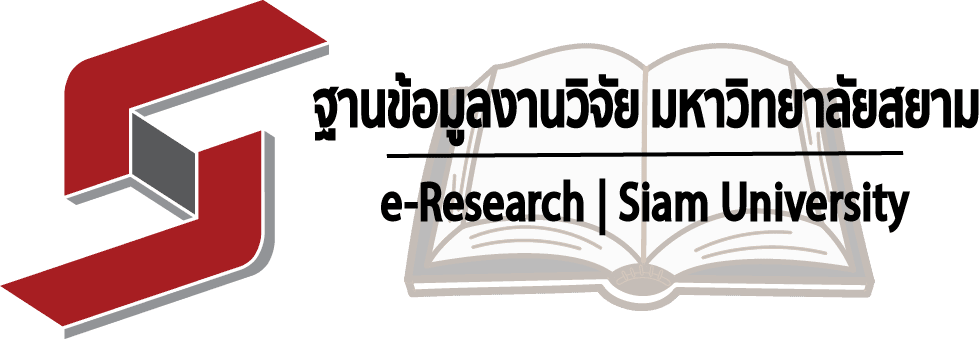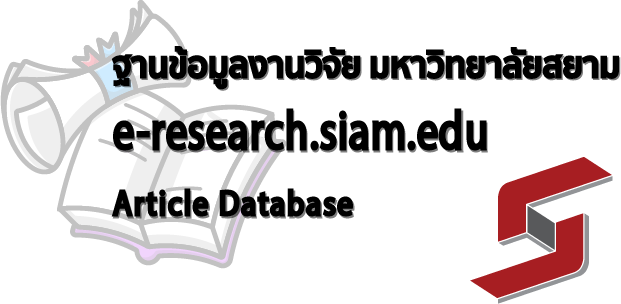- KB Home
- -ประเภทของโครงการ | Project Type
- บทความวิชาการ | Academic Article
- TCI
- Study of laws and regulations related to the management of Florfenicol detection cases in swine
| Title: | Study of laws and regulations related to the management of Florfenicol detection cases in swine |
| Researcher: | อ. ชินวัจน์ แสงอังศุมาลี – Mr. Shinnawat Saengungsumalee |
| Degree: | หลักสูตรเภสัชศาสตรบัณฑิต สาขาวิชาการบริบาลทางเภสัชกรรม – Doctor of Pharmacy Program in Pharmaceutical Care |
| Major: | เภสัชศาสตรบัณฑิต ภ.บ. (การบริบาลทางเภสัชกรรม) – Pharm.D. (Pharm.Care) |
| Faculty of study: | เภสัชศาสตร์ (Pharmacy) |
| Academic year: | 2567 (2024) |
| Published: | Thai Journal of Pharmaceutical Sciences Vol. 49 No. 1 (2025). DOI: https://doi.org/10.56808/3027-7922.2983 Click |
Abstract
Background: Florfenicol, an antibiotic permitted in veterinary medicine, currently lacks an established maximum residue limit (MRL) in meat products in Thailand, effectively mandating undetectable residue levels. In May 2024, Thailand Pesticide Alert Network reported florfenicol residues in swine, raising concerns about consumer safety, rational veterinary drug use, and the potential for antimicrobial resistance (AMR). Addressing these issues involves multiple laws, decrees, and regulations across various agencies.
Objectives: To analyze laws and regulations managing florfenicol residue detection in swine.
Materials and Methods: This documentary research examines relevant laws, regulations, and measures for florfenicol in livestock and compares Thailand’s regulations with those in other countries.
Results: (1) Thailand’s florfenicol regulations in veterinary drugs are generally such as the United States of America (USA) and the European Union (EU). However, the lack of an MRL in Thailand enforces a zero-tolerance policy, complicating monitoring and enforcement. Authorities should jointly evaluate the rationale for establishing an MRL for florfenicol residues to align with international standards, similar to the EU, which has established MRLs in swine at 300, 500, 2000, and 500 µg/kg in muscle, skin and fat, liver, and kidney, respectively. (2) Six florfenicol formulations are registered in Thailand, with premix formulations classified as specially controlled and injectable forms as dangerous. Studies show contamination of water sources near farms and the presence of florfenicol-resistant bacteria, highlighting a significant issue. Reclassify florfenicol-containing drugs, particularly premix forms, under specially controlled to address rational drug use (RDU) and AMR risks. (3) Research indicates multiple risks in antibiotic use on farms. Identified issues should be systematically communicated to the Department of Livestock Development and local authorities, encouraging interagency collaboration for effective solutions.
Conclusion: Thailand’s florfenicol regulations align broadly with the USA and EU, but the lack of an MRL creates enforcement challenges, emphasizing the need for establishing clear residue limits, reclassifying certain formulations to mitigate contamination and resistance risks, and enhancing interagency collaboration to address antibiotic use in farming.
Keywords: Drug regulations, Florfenicol, Medicated animal feed, Veterinary drugs
DflipCode
อ. ชินวัจน์ แสงอังศุมาลี – Mr. Shinnawat Saengungsumalee.2567 (2024). Study of laws and regulations related to the management of Florfenicol detection cases in swine. บทความ (Paper). วิทยาศาสตร์สุขภาพ|Health Science. เภสัชศาสตร์ (Pharmacy). เภสัชศาสตรบัณฑิต ภ.บ. (การบริบาลทางเภสัชกรรม) – Pharm.D. (Pharm.Care). หลักสูตรเภสัชศาสตรบัณฑิต สาขาวิชาการบริบาลทางเภสัชกรรม – Doctor of Pharmacy Program in Pharmaceutical Care. Bangkok: Siam University


